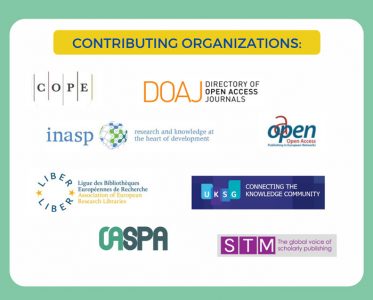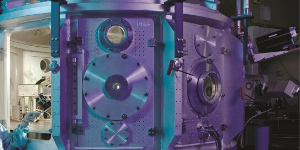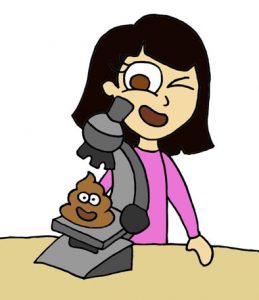Menu
First, what is predatory publishing?
- “A predatory publisher is an opportunistic publishing venue that exploits the academic need to publish but offers little reward for those using their services.” - Iowa State University.
- Predatory publishers publish in many formats.
- Predatory publishing came from the phrase “predatory open access journal” - coined by Jeffrey Beall, Scholarly Communications Librarian at University of Colorado in 2010.
- You may hear it called “write-only publishing” or “deceptive publishing”.
- No standardized definition.
“Predatory journals and publishers are entities that prioritize self-interest at the expense of scholarship and are characterized by false or misleading information, deviation from best editorial and publication practices, a lack of transparency, and/or the use of aggressive and indiscriminate solicitation practices” (Grudniewicz et al., 2019).
The role of science librarians
Awareness & Education
I will introduce some useful resources and offer some ideas on how we, as future science librarians, can be part of the solution to predatory publishing.
First, how can we educate ourselves?
I recommend the Association of College & Research Libraries resources:
➔Association of College and Research Libraries (ACRL) Scholarly Communication Toolkit: Evaluating Journals
➔From ACRL: Everything You Ever Wanted to Know About Predatory Publishing but Were Afraid to Ask
They have the Scholarly Communication toolkit Evaluating Journals that covers recognising predatory and vanity journals. If you want to dive deeper, read the ACRL conference paper “Everything you ever wanted to know about predatory publishing but were afraid to ask,” which covers a lot of the complexities of this issue.
Next, when searching for more information, using “predatory” is not enough. Try searching with unethical, deceptive, pseudo-scientific, fraudulent, vanity, and so on, as well.
Tools to help students and researchers
What tools can you use to help students and researchers evaluate publications to avoid publishing in an untrustworthy journal?
Think. Check. Submit.
The go-to tool is Think. Check. Submit. Ready to use materials are available to librarians, covering each step a researcher should take before deciding where to publish: Think ⇒ Check ⇒ Submit.
This user-centred, multilingual, campaign is produced with the support of a coalition of scholarly communications publishers and organizations – and not just representing the West either:
Think. Check. Submit. Contributing organizations:
- Committee on Publication Ethics (COPE)
- Directory of Open Access Journals (DOAJ)
- INASP
- ISSN International Centre
- Ligue des Bibliothèques Européennes de Recherche – Association of European Research Libraries (LIBER)
- Open Access Publishing in European Networks (OAPEN)
- Open Access Scholarly Publishers Association (OASPA)
- International Association of STM Publishers (STM)
- UKSG
Check covers the following:
❏ Do you or your colleagues know the journal?
❏ Can you easily identify and contact the publisher?
❏ Is the journal clear about the type of peer review it uses?
❏ Are articles indexed in services that you use?
❏ Is it clear what fees will be charged?
❏ Do you recognise the editorial board?
❏ Do the editorial board mention the journal on their own websites?
❏ Is the publisher a member of a recognized industry initiative?
The CRAAP test.
Another journal evaluation tool that is helpful for educating students, answers an essential, and deep, question: Are the journal’s articles a bunch of . . .?! The CRAAP test. With its catchy name, it would not be challenging to create an enticing, information literacy campaign around this test to prevent junior researchers from publishing in predatory journals.
WAME: Identifying Predatory or Pseudo-Journals
A third evaluation tool developed by The World Association of Medical Editors (WAME) is quite detailed and is directed towards education institutions, librarians, and so on ➔ Identifying Predatory or Pseudo-Journals
Other ways to help: Managing email spam & leveraging AI
I’d like to briefly introduce two other ways librarians might help scientific researchers deal with predatory publishers. - Managing academic email spam & leveraging AI
Managing email spam
Please read the quote from the scientist I interviewed for an earlier science librarianship assignment. Note her irritation:
“I get emails every single day from predatory publishers. It is totally shocking. There are a ton of them. Many are asking for publications for journal topics that I know nothing about even!”
Michelle Hilts PhD, FCCPM, Senior Medical Physicist, BC Cancer Agency
If predatory publishers seek submissions through Academic email spam, why don’t we help to limit the contact predatory publishers have with researchers via email?
“Physicians and institutions should develop strategies to optimize e-mail communication and management with focus on minimizing the volume of unsolicited e-mails” (Wood, K. E., & Krasowski, M. D. 2020).
I agree with this quote from the academic and practising physicians Wood & Krasowski and believe there is a role for librarians to play alongside IT departments here.
Leveraging AI
Could there be a role for AI as well? The Health Sciences Librarian at the University of Florida, Ariel Pomputius (2019) writes that the best available method for recognizing predatory publishers is subjective analysis by humans. But, in the near future, AI will be able to identify misinformation apart from authoritative sources.
However, she continues,
"Librarians should advocate for transparency on how machine learning determines what constitutes misinformation or predatory publishers, because evaluating information resources and teaching others to do the same is a librarian’s role.” (pp. 373-374)
I will leave you with those thoughts on the future of science librarianship and predatory publishers.
Selected resources
ACRL. (2020). Scholarly communication toolkit: Evaluating journals. Association of College and Research Libraries. https://acrl.libguides.com/scholcomm/toolkit/evaluating
Beall, J. (2017). What I learned from predatory publishers. Biochemia Medica, 27(2), 273–278. https://doi.org/10.11613/BM.2017.029
Berger, M. (2017). Everything you ever wanted to know about predatory publishing but were afraid to ask. At the Helm: Leading Transformation, 206–217. http://www.ala.org/acrl/sites/ala.org.acrl/files/content/conferences/confsandpreconfs/2017/EverythingYouEverWantedtoKnowAboutPredatoryPublishing.pdf
Blakeslee, Sarah. (2019). Literature reviews: The CRAAP test. Meriam Library. http://libguides.csuchico.edu/c.php?g=414315&p=2822716
Grudniewicz, A., et. al. (2019). Predatory journals: No definition, no defence. Nature, 576(7786), 210–212. https://doi.org/10.1038/d41586-019-03759-y
Ojala, M., Reynolds, R. & Johnson, K.-G. (2020). Predatory journal challenges and responses. The Serials Librarian: 1-6. doi: 10.1080/0361526X.2020.1722894
Pomputius, A. (2019). Putting misinformation under a microscope: Exploring technologies to address predatory false information online. Medical Reference Services Quarterly, 38(4), 369–375. https://doi.org/10.1080/02763869.2019.1657739
Teixeira da Silva, J. A., Dobránszki, J., Tsigaris, P., & Al-Khatib, A. (2019). Predatory and exploitative behaviour in academic publishing: An assessment. The Journal of Academic Librarianship, 45(6), 102071. https://doi.org/10.1016/j.acalib.2019.102071
Think. Check. Submit. (2020). Think. Check. Submit. https://thinkchecksubmit.org/
Understanding Predatory Publishers. (2019). Iowa State University - University Library. https://instr.iastate.libguides.com/predatory
Winker, Margaret A., & Laine, Christine. (2017). Identifying predatory or pseudo-journals. WAME: The World Association of Medical Editors. http://www.wame.org/identifying-predatory-or-pseudo-journals
Wood, K. E., & Krasowski, M. D. (2020). Academic e-mail overload and the burden of “Academic Spam”. Academic Pathology, 7, 237428951989885. https://doi.org/10.1177/2374289519898858







